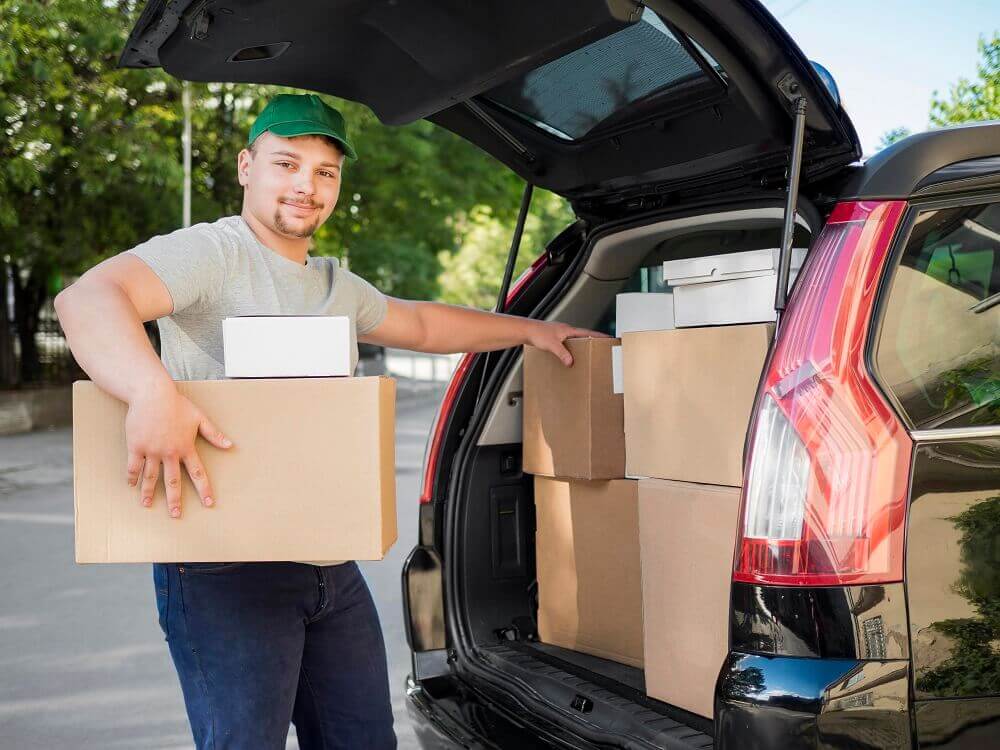Rena Monrovia is a well-known expert in the field of transportation and logistics. With years of experience, she has become a trusted voice in helping individuals and businesses navigate the complexities of moving goods efficiently and safely. Her advice is invaluable for anyone looking to transport goods by car, whether for personal or commercial purposes.
In this article, we will explore various aspects of car transportation, including preparation, efficient packing and loading techniques, managing long-distance trips, and the environmental impact. By following Rena Monrovia’s expert tips, you can ensure a smooth and secure journey for your transported items.
The Essentials of Car-Based Transport
Transporting by car involves using a personal or commercial vehicle to move goods from one location to another. This method is common for both short distances within a city and longer journeys between states or even countries. People use cars for transportation in various scenarios, such as moving household items during a relocation, transporting goods for business deliveries, or carrying personal belongings for vacations or road trips. Car transportation offers several benefits, including flexibility in scheduling and routes, cost-effectiveness for short to medium distances, and the convenience of handling personal belongings directly.
Preparation for Transport
Proper preparation is essential for ensuring a smooth and safe transportation experience.
Checking Vehicle Condition
Before setting out, ensure your vehicle is in good working order. Check the oil, tire pressure, brakes, and lights. A well-maintained car is crucial for a safe trip.
Planning the Route
Plan your route in advance. Use GPS or maps to find the best path and consider potential traffic or roadwork that might delay your journey.
Estimating Time and Distance
Accurately estimate the time and distance of your trip. This helps in planning rest stops and ensures you allocate enough time for safe travel without rushing.
Packing and Loading Techniques
Use sturdy boxes and packing materials to protect your items, label boxes clearly, and pack heavier items at the bottom to prevent crushing lighter goods. Distribute weight evenly to maintain vehicle balance, keep essential items accessible for easy retrieval during the trip, and use straps or ropes to secure loose items. Avoid overpacking, which can lead to damaged items and an unsafe load, and ensure that the driver’s view is not obstructed by the cargo.
Managing Long-Distance Car Transport
For long-distance trips, make sure your car is fully serviced, plan for regular breaks to rest and refresh, and pack snacks, water, and entertainment for the journey. Take breaks every two hours to avoid fatigue, share driving responsibilities if possible, and stay hydrated while avoiding heavy meals that can make you sleepy. Have a plan for emergencies, keep a list of emergency contacts, know how to change a tire or perform basic repairs, and ensure your phone is charged with a backup power source.
Efficient Packing and Loading Techniques
Proper packing and loading are crucial to ensure the safety and security of your items during transport.
Best Practices for Packing
Use sturdy boxes and packing materials to protect your items from damage. Label boxes clearly to make unloading and organizing easier at your destination. Pack heavier items at the bottom to prevent crushing lighter goods, and use padding such as bubble wrap or packing paper for fragile items. Ensuring each box is filled to capacity without being overstuffed helps maintain the integrity of the contents.
Tips for Loading Efficiently
Proper loading techniques ensure a safer and more organized transport, helping you avoid potential issues on the road.
- Distribute Weight Evenly: Ensure that weight is balanced throughout the vehicle to maintain stability and improve handling and fuel efficiency.
- Place Heavier Items Lower: Position heavier items on the bottom and closer to the vehicle’s center to lower the center of gravity and reduce the risk of tipping.
- Keep Essential Items Accessible: Store important items like snacks, water, and emergency supplies in easily reachable locations for quick access during the trip.
- Use Straps or Ropes: Secure loose items with straps or ropes to prevent shifting during transit, which can cause damage or create safety hazards.
- Avoid Obstructing the Driver’s View: Ensure that the cargo does not block the driver’s view or interfere with the vehicle’s controls, as this can increase the risk of accidents.
Avoiding Common Mistakes
Avoid overpacking boxes, which can lead to damaged items and an unsafe load. Overpacked boxes are more likely to break, and excessive weight can strain the vehicle’s suspension. Also, ensure that the driver’s view is not obstructed by the cargo. Obstructed views can increase the risk of accidents by reducing visibility. Regularly check the load during stops to ensure everything remains secure and adjust if necessary. Additionally, be mindful of the vehicle’s weight limits to avoid mechanical issues and ensure compliance with transportation regulations.
Environmental Impact and Eco-Friendly Practices
Car transportation contributes to environmental pollution, but understanding this impact can help in making more eco-friendly choices. Use fuel-efficient vehicles, carpool or combine trips to reduce the number of journeys, and maintain your car to ensure it runs efficiently and emits fewer pollutants. Consider alternatives like electric vehicles or hybrid cars, and use public transportation when possible to further reduce your carbon footprint.

Technological Aids in Car Transport
Modern GPS and navigation tools can help plan routes, avoid traffic, and save time and fuel. Several apps are available to help track fuel usage, maintenance schedules, and provide reminders for essential services. Stay updated on the latest innovations, such as advanced driver-assistance systems (ADAS), which enhance safety and efficiency in car transport.
Handling Special Items
Wrap fragile items in bubble wrap and place them in secure boxes, labeling these boxes clearly and ensuring they are well-cushioned during transport. For oversized items, ensure your car can handle the weight and size, use roof racks or trailers if necessary, and secure the items properly. When transporting pets, ensure they are comfortable and safe by using pet carriers or harnesses and making regular stops for their comfort.
Legal and Insurance Considerations
Ensure your car insurance covers the transportation of goods, as some policies may require additional coverage for commercial transport. Know the legal requirements for transporting goods, including permits and documentation for commercial transport. In case of an accident, follow the proper procedures for filing an insurance claim, and keep all necessary documents and evidence to support your claim.
The Future of Car Transportation
Stay informed about emerging trends, such as autonomous vehicles and ride-sharing services, which are transforming the transportation landscape. Autonomous vehicles promise to revolutionize car transport by enhancing safety and efficiency. Future innovations may include smarter logistics systems, improved fuel efficiency, and new forms of transportation that further enhance the way we move goods.
Rena Monrovia’s Expert Tips
Rena emphasizes the importance of preparation and safety, recommending thorough maintenance of your vehicle, careful planning of your route, and ensuring all items are securely packed. She shares case studies of successful car transportation, illustrating best practices and lessons learned from real-world experiences.
FAQs
What should I do if my car breaks down during transport?
If your car breaks down, move it to a safe location, call for roadside assistance, and inform any necessary parties about the delay.
How can I ensure the safety of my items during transportation?
Use proper packing materials, secure items to prevent shifting, and avoid overloading your vehicle. Regularly check that everything remains secure during the journey.
Are there any items I shouldn’t transport by car?
Avoid transporting hazardous materials or perishable goods that may spoil during the trip. Check local regulations for specific restrictions.
How do I handle transporting perishable goods?
Use coolers or refrigerated containers to keep perishable goods fresh. Plan for regular stops to check and manage the condition of these items.
What are the best ways to stay alert during long drives?
Take regular breaks, stay hydrated, and avoid heavy meals. Listening to music or engaging in conversations can also help keep you alert.
Conclusion
Transporting goods by car, whether for personal or commercial purposes, involves careful planning and preparation. From ensuring your vehicle is in top condition to effectively packing and loading your items, every step is crucial for a safe and efficient journey.
Experts like Rena Monrovia provide invaluable insights into the best practices for car transportation, emphasizing the importance of safety, organization, and eco-friendly practices. By following these guidelines, you can ensure your transportation experience is smooth, secure, and environmentally conscious. Stay informed about technological advancements and legal considerations to continually improve your car transport methods and adapt to future innovations in the field.


